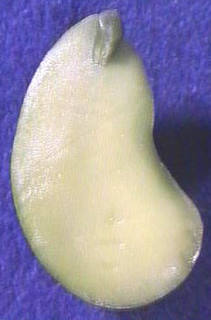The research programme focuses both on elucidating the basis of the many facets of seed recalcitrance and particularly on the theory and practice of cryotechnology to conserve the genetic resources of recalcitrant seeded species. Together with a specialist colleague from the Microscope Microanalyses Unit, PGCR scientists of the SBCS offer teaching and supervision to students from the final undergraduate year through those of Honours, M.Sc. and Ph.D levels. Generally, at any one time, four or five Ph.D. candidates, and a similar number at each of the M.Sc. and Honours levels participate in the research programme. Additionally, third-year undergraduate projects are popular. Post-doctoral fellows who have worked, or are working, with the PGCR include those from China, Nigeria, Spain and India; and local and international collaborators are also involved, illustrating the lure of the research programme outside our borders.
supervision to students from the final undergraduate year through those of Honours, M.Sc. and Ph.D levels. Generally, at any one time, four or five Ph.D. candidates, and a similar number at each of the M.Sc. and Honours levels participate in the research programme. Additionally, third-year undergraduate projects are popular. Post-doctoral fellows who have worked, or are working, with the PGCR include those from China, Nigeria, Spain and India; and local and international collaborators are also involved, illustrating the lure of the research programme outside our borders.
PGCR members have published many research papers and several reviews in the international literature, as well as various chapters in books and numerous refereed conference proceedings. The programme had the support of the Millennium Seed Bank (Kew), through which organisation the award (in 2005) of a 3-year grant from the Darwin Initiative (DEFRA, UK) was facilitated. Intrinsic to this agreement, a module (at the Honours level) on Cryobiology was launched in 2005, and is open to extramural students/trainees, especially from elsewhere in Africa. The International Plant Genetic Resources Institute (IPGRI), now Bioversity International, endorsed our endeavours over many years as being worthy of the establishment of a Centre of Excellence, with the specific objectives: "...for research and training on seed biology and conservation methodologies with the aim of strengthening gene banks and other genetic resources conservation programmes in the Sub-Saharan Africa region."
In 2008, this philosophy was put into action by our participation in the development of a proposal, enhancing capabilities of conservation and utilization of plant genetic resources in the SADC region (2009-2014) under the NEPAD/SANBio umbrella. The plant germplasm conservation research is inter-disciplinary in nature, in that it contributes to, and uses the expertise of practitioners of conservation biology and has inputs from, and significance in, fields ranging from biophysics (freezing responses), molecular biology, cytology, physiology and ecology. A further salient feature is the development of a database which combines spatial and meteorological information with plant phenology, especially regarding fruit set and seed production from season to season.
The ultimate aims of the group are to expand endeavours in plant germplasm conservation via further research leading to the most comprehensive understanding of the biology of desiccation-sensitive seeds and to establish firmly best practices for cryopreservation of both the germplasm of recalcitrant-seeded species and the orthodox seeds of as many important indigenous species as possible.
As these aims are achieved, plant germplasm representing a wide spectrum of species should be conserved at a national cryo-facility.